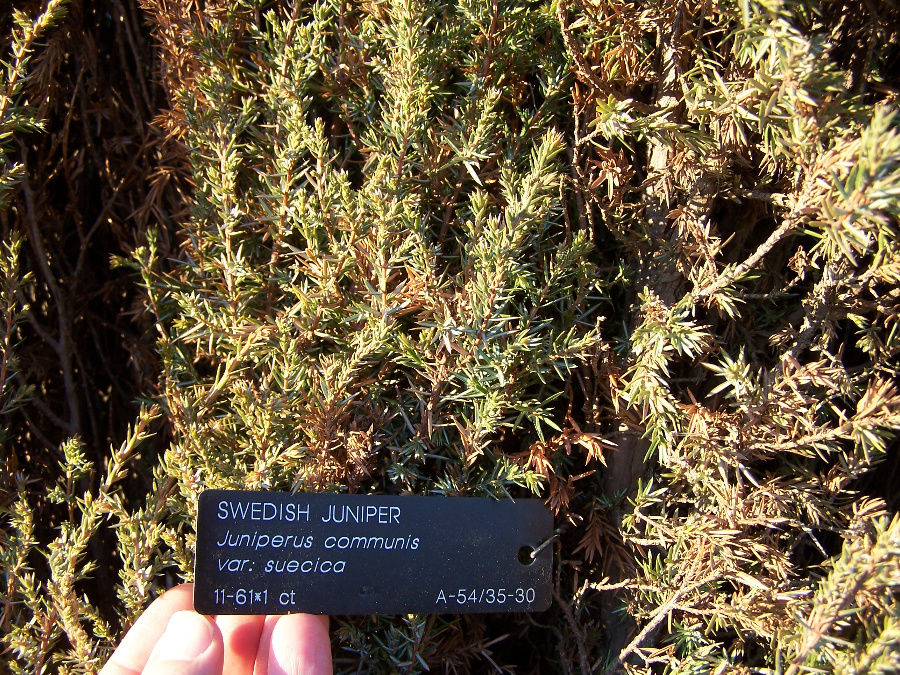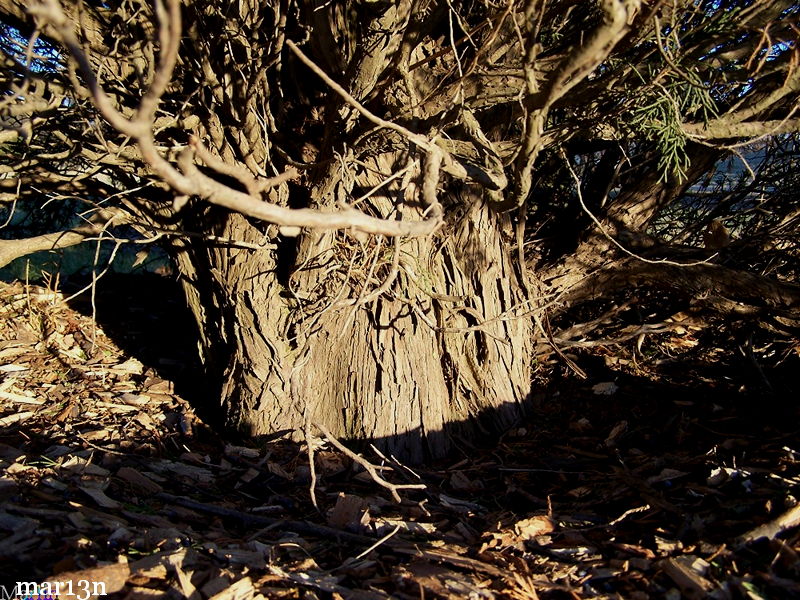Swedish Juniper – Juniperus communis
 This Swedish Juniper at the Morton Arboretum is 47 years old
This Swedish Juniper at the Morton Arboretum is 47 years old
Common juniper is possibly the most widely distributed tree in the world. Common juniper is highly valued as an ornamental, provides good ground cover even on stony or sandy sites. This species was first cultivated in 1560. This circumboreal species occurs across North America, Europe, northern Asia and Japan.

Common juniper is almost completely circumpolar within the exception of a gap in the Bering Sea region. It is widespread in North America beyond the northern limit of trees, occurring from western Alaska and British Columbia to Newfoundland, Greenland, and Iceland.
 The bark of common juniper is thin, shreddy or scaly, often exfoliating into thin strips
The bark of common juniper is thin, shreddy or scaly, often exfoliating into thin strips
Common juniper extends southward through New England to the Carolinas and westward through northeastern Illinois, Indiana, northern Ohio, Minnesota, and Nebraska to the western mountains of Washington, California, Arizona, and New Mexico.
Cones of most junipers are eaten by many species of birds and mammals. Numerous animals, including the American robin and black-capped chickadee, feed on the cones of common juniper whenever they are available. American robins frequently consume large numbers of cones during the spring and fall. In eastern Ontario, cones provide food for cedar and Bohemian waxwings. Wild turkeys also feed on cones of common juniper.

